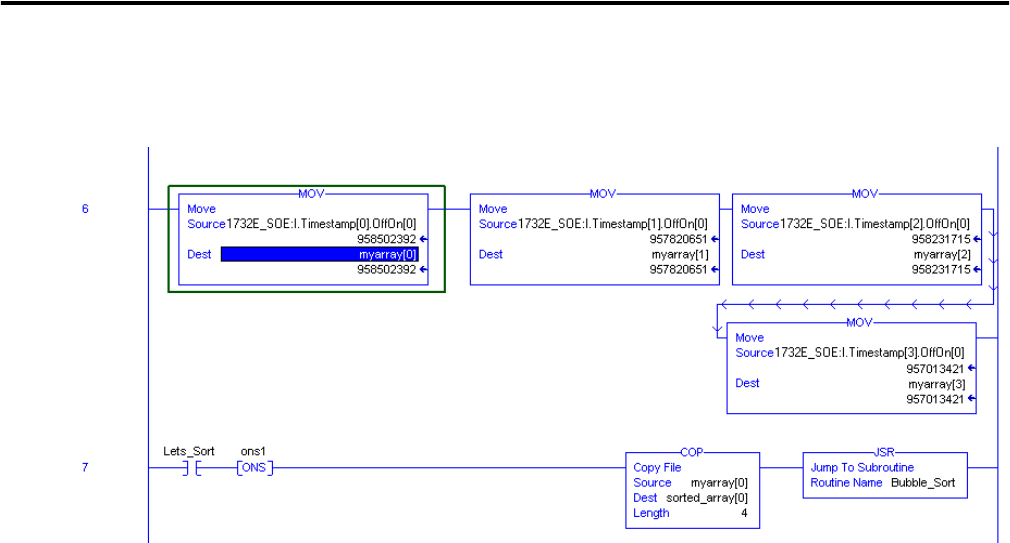supporting Sequence of Events
Table Of Contents
- 1732E-UM002A-EN-E 1732E EtherNet/IP ArmorBlock Supporting Sequence of Events User Manual
- Important User Information
- Table of Contents
- Preface
- Chapter 1 - About 1732E ArmorBlock Modules
- Chapter 2 - Module Overview
- Chapter 3 - Use the Module in an ArmorBlock System
- Chapter 4 - Install Your Module
- Chapter 5 - Configure the Module for Your EtherNet/IP Network
- Chapter 6 - Configure the Module Using RSLogix 5000
- Introduction
- Set Up the Hardware
- Create the Example Application
- Configure Your I/O Module
- Overview of the Configuration Process
- Add a New Bridge and Module to Your RSLogix 5000 Project
- Use the Default Configuration
- Change the Default Configuration
- Download Your Configuration
- Edit Your Configuration
- Access Module Data in RSLogix 5000
- Configure RSLogix 5000 and the 1756-EN2T Communication Module for CIP Sync
- Chapter Summary and What’s Next
- Chapter 7 - Module Features
- Introduction
- Determine Module Compatibility
- Module Features That Can Be Configured
- Chapter Summary and What’s Next
- Chapter 8 - Using the Module
- Chapter 9 - Interpret Status Indicators
- Chapter 10 - Troubleshoot the Module
- Appendix A - ArmorBlock 2 Port Ethernet Module Specifications
- Appendix B - Module Tags
- Appendix C - 1732E EtherNet/IP ArmorBlock Supporting Sequence of Events Data Tables
- Appendix D - Connect to Networks via Ethernet Interface
- Appendix E - 1732E ArmorBlock I/O Embedded Web Server
- Glossary
- Index
- How Are We Doing?
- Back Cover

Publication 1732E-UM002A-EN-P - March 2010
64 Using the Module
structure is then moved to another array used to sort the data. In this example,
32 bits of each 64-bit timestamp are moved to the new array.
Acknowledge Timestamp Latching Timestamp Data
In most cases, Timestamp Latching is enabled. This means that once the
module timestamps an input transition, the module will not timestamp another
transition in the same direction on the same input until you acknowledge the
data from the first timestamped transition; when you acknowledge data, you
clear it from the module.
To clear data from the module, you must acknowledge them via the module’s
output tags. You can clear data in the following ways:
• Clear latched timestamp data for specific inputs – As data is
acknowledged, it is cleared from the module, and the module will once
again timestamp the first new transition for the input in the cleared
direction(s).
To clear timestamp data for specific inputs, you must complete the
following steps:
a. Write to the EventAck output tag (
O.EventAck
). This tag determines
which edge you will clear (acknowledge).
• 0 = clear only the falling edge timestamp (I.Timestamp[x].OnOff)
• 1 = clear only the rising edge timestamp (I.Timestamp[x].OffOn)
• 2 = clear both the falling and rising edge timestamps










